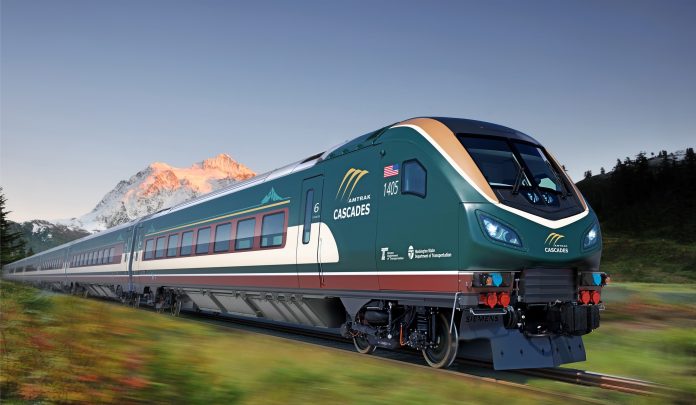Preliminary concepts for Amtrak Cascades service growth have surfaced, offering an early look into the potential direction of frequencies and infrastructure enhancements to support them. As part of a renewed service development plan process responding to public feedback, the Washington State Department of Transportation (WSDOT) has developed five options to illustrate different frequency levels, stop patterns, and top speeds. A final plan may lie ahead, but implementing it will certainly offer a challenge in its own right.
For over a year, WSDOT has been working on its Preliminary Service Development Plan (SDP). The first cut of details show promise that Cascades could see substantial service growth in the next 20 years. Right now, the Cascades schedule is fairly light with four daily roundtrips between Seattle and Portland, two daily roundtrips between Seattle and Vancouver, British Columbia, and two daily roundtrips between Portland and Eugene. An additional two daily roundtrips will be added between Seattle and Portland later this fall.
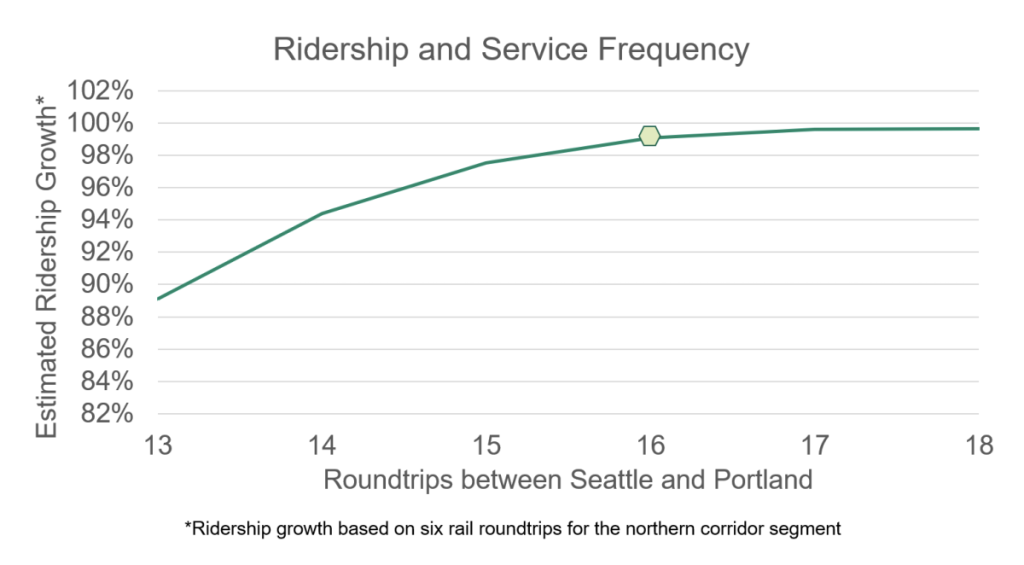
Under draft analysis, WSDOT believes that the sweet spot for frequency and ridership capture is 16 daily roundtrips between Seattle and Portland with diminishing returns after that. So all preliminary concepts provide options at or below that service level.
The following diagram gives a sense of the service levels conceived in the five conceptual options:
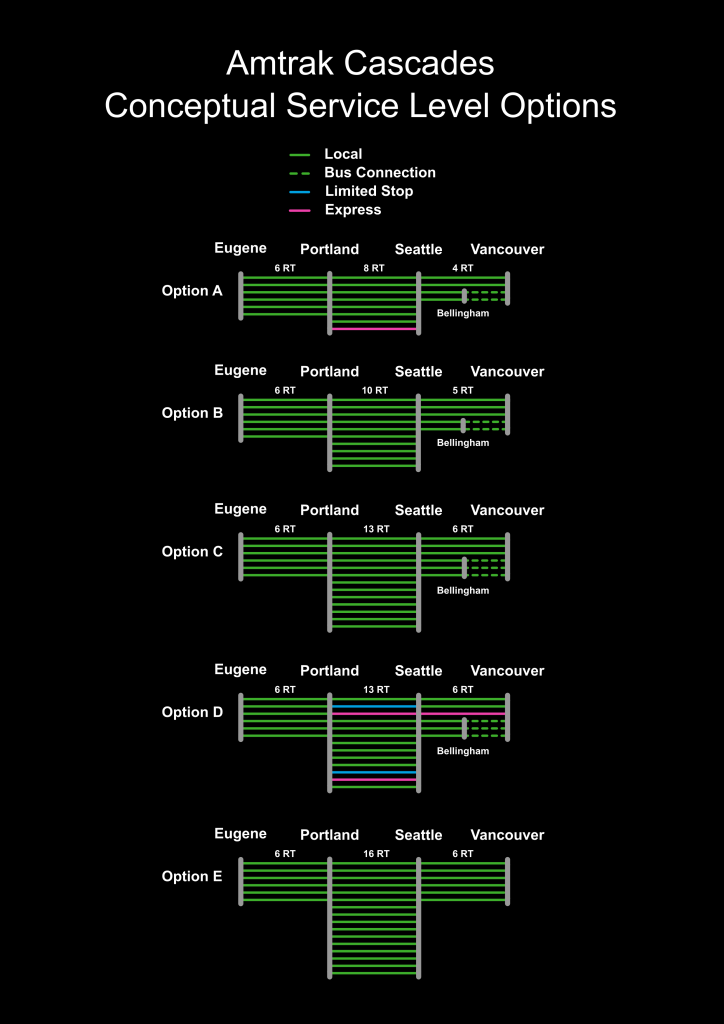
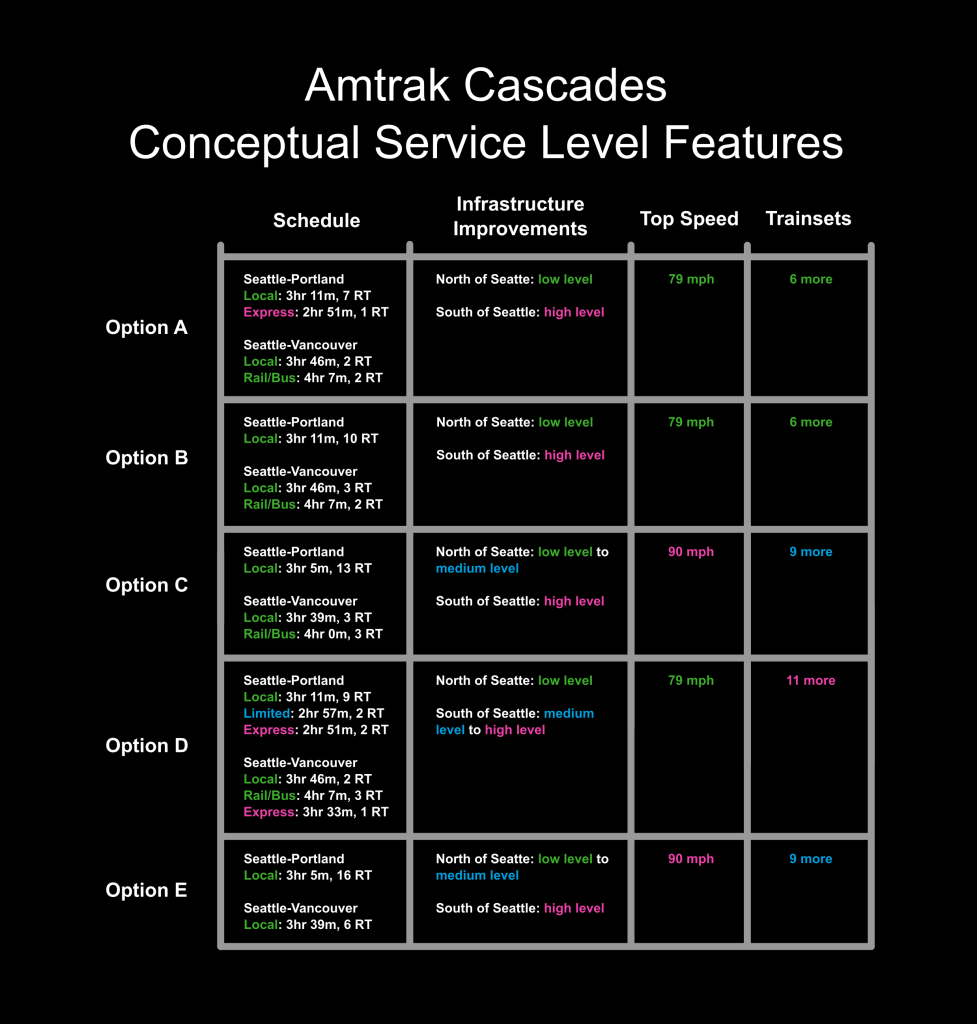
In brief, the options shake out as follows:
- Option A provides a mixed approach to service that would require infrastructure improvements for higher speeds and six more trainsets. WSDOT thinks the option could be a “building block service” option.
- Option B is a heavier service approach between Seattle and Portland. It would have the same infrastructure and trainset requirements as Option A. WSDOT also thinks this option could be a “building block service” option.
- Option C similarly would require heavier improvements but has quite a few more trips and therefore would need at least nine more trainsets. Option C is also the second highest performing ridership option and would feature a top speed of 90 mph.
- Option D would introduce express and limited stop service between Seattle and Portland, necessitating at least 11 more trainsets but otherwise similar characteristics of Option C. The option would also require a moderate to high level of infrastructure improvements.
- Option E would run all service as local and have the highest number of trips. It would also necessitate at least nine more trainsets, feature a top speed of 90 mph, and generate the highest ridership growth of the options. The option would necessitate a higher level of infrastructure improvements among the options.
As should be clear, most of these options aren’t necessarily mutually exclusive and could generally form a phased service growth implementation approach.

WSDOT has identified a modest list of strategic infrastructure improvements that would be required for the different options. These include things like triple-tracking sections, modifying junctions and yard facilities, and installing controlled siding features. Options C, D, and E would require the most improvements. Notably absent as improvements are any north of White Rock and into Vancouver, British Columbia, which can be a very slow slog.
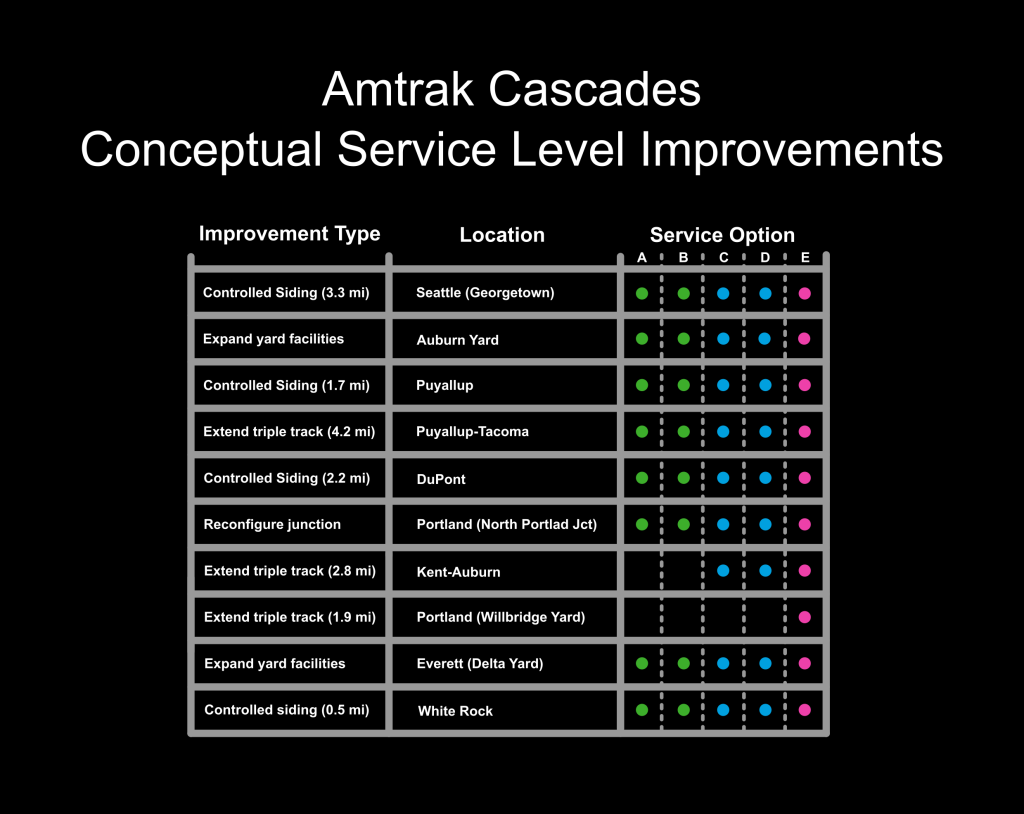
This work hasn’t been happening in a vacuum. WSDOT has been engaging with various partners to design service level options and infrastructure improvements. This includes the key host railroads of Burlington Northern Santa Fe (BNSF), Canadian National (CN), and Sound Transit, that own tracks Cascades uses. The fact that the service growth options are as robust as they are suggests that host railroads are open to the possibility of more passenger rail service.
Of course, notably absent from the SDP concepts is any corridor expansion to Eastern Washington, which has been a priority from All Aboard Washington, a passenger rail advocacy organization. Additional east-west service could find another path forward with new Amtrak long-distance service though.
For many passenger rail advocates, another planning process may be more a source of worry than confidence. Washington is good developing plans with few hard deliverables.
Washington continues to wade through a lengthy planning process for high-speed rail, commissioning report after report to justify setting up an interstate compact as a vehicle to plan and build a project. That seems likely to be tied up in many more years of process, as worthy as it may be.
For conventional rail, plans for substantial service growth on the Cascades corridor have mostly sat on shelves collecting dust. A long-range plan from 2006 called for 13 daily roundtrips between Seattle and Portland and reduced travel times to two hours and 30 minutes by 2023. Yet there’s been minimal increases in trips since and travel times still hover around three hours and 25 minutes. Washington was successful though in obtaining grants during the Obama era to make some targeted corridor speed and reliability improvements.
There is hope, however, that the SDP could finally change the state of conventional intercity passenger rail in the Cascades corridor. Next month, a formal draft plan will be released for public feedback. Following public comment period of the Preliminary SDP, WSDOT will finalize a draft and submit it to the Federal Railroad Administration. WSDOT also hopes for acceptance of Cascades into the Corridor Identification and Development program, which would support further project development and eventually help qualify Cascades for federal grants to expand and enhance service.
If you have feedback on the service level concepts, WSDOT is still taking public feedback by email.
Stephen is a professional urban planner in Puget Sound with a passion for sustainable, livable, and diverse cities. He is especially interested in how policies, regulations, and programs can promote positive outcomes for communities. With stints in great cities like Bellingham and Cork, Stephen currently lives in Seattle. He primarily covers land use and transportation issues and has been with The Urbanist since 2014.

